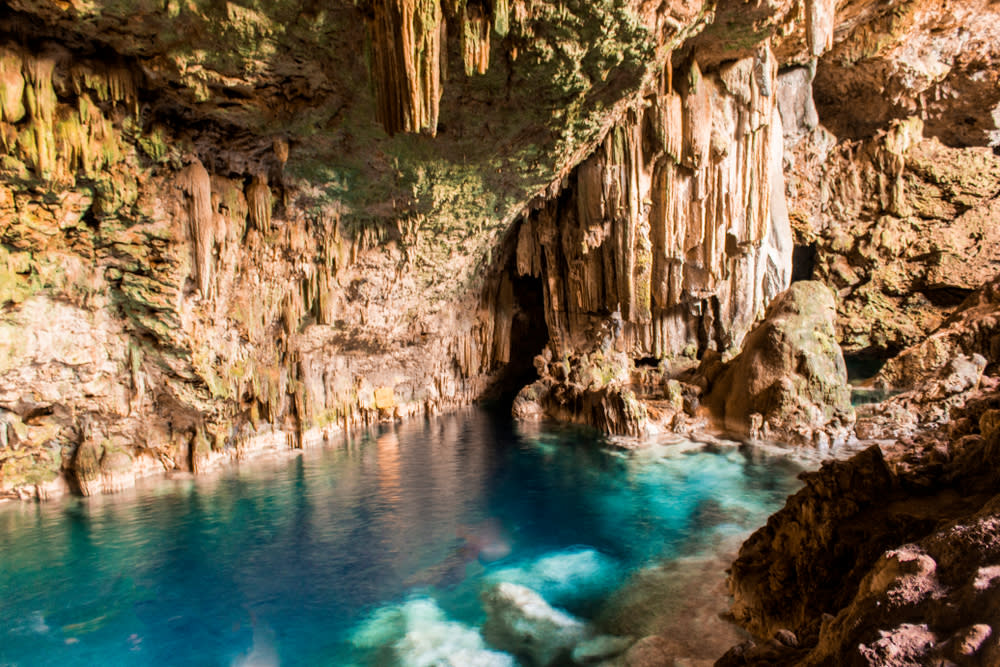More from Varadero
Main Menu
- 00:00
- 06:00
- 12:00
- 18:00
- 23:00
Varadero : Next 24-Hour Weather
Today - 16th April 2025
Sunrise 07:03
Sunset 19:46
Tomorrow - 17th April 2025
Sunrise 07:03
Sunset 19:46
Holiday Weather Now
Sorted by popularity:
Updated at 08:01 GMT
-
Temp feels like17°C63°F
-
Length of day12h 43m
-
Pressure30" (1017 hpa)
-
Visibility9 km (5miles)
-
Wind speed17 km/h
Sunrise 07:03
Sunset 19:46
-
Temp feels like:
17ºC (63 ºF)
-
Length of day:
12h 43m
-
Pressure:
30" (1017 hpa)
-
Visibility:
5 miles (9 km)
-
Wind speed:
17 km/h
Weather Varadero
Varadero is located on the eastern side of the north coast of Cuba and is the country's leading resort and tourist destination. It has a mild sub-tropical climate with a hot dry season and a hot wet season with occasional hurricanes. Varadero is in the path of cooling trade winds from the north east and it sits in the Caribbean Sea with the Gulf of Mexico to the north with the Bahamas forming the barrier to the North Atlantic Ocean.
Temperature
From November to April is the hot dry season with average temperatures from 24°C in November and the cooler temperatures in December and January of 22°C.
Rain
From May to October is the wetter season with average rainfall reaching a high of 40mm in October that will fall over 12 days that month. The temperatures here are relatively mild and never reach the high 30's as seen in some tropical locations.
Temperature
Even in the hotter part of the year from November to April the average high temperatures just exceed 30°C in July to September when it tops 31°C. Average low temperatures at night rarely drop below the high teens with 17°C the coolest average seen in December, January and March. The cooling winds from the Caribbean Sea help to moderate the temperatures and stop from them getting over hot.
Being located in the tropics even a dry season will have storms and rain but as the word dry suggests it is not as wet as the remainder of the year in the wet season.
Rain
Between November and April rainfall is low with an average 10 and 20mm that will fall over 5 to 7 days each month. Most of the rain is from tropical storms that don't last long and then the sun breaks through for pleasant holiday weather. This is the best season to visit Cuba and will give a break from the chills and colds of European winters.
The wet summer season from May till October is not out of bounds by any means and in fact some of its busiest months are July and August. However, tourists should be aware that this season sees the temperatures hike up to the low 30s; the air grows thick and heavy with increased humidity and the heavens open.
Humidity
The hot wet season sees temperatures as well humidity increase to produce heavy steamy days with September and October experiencing an average humidity of 85%.
Sunshine hours
Sunshine hours have increased by the wetter season as the storms produce heavy rain that falls over a short period of time each day it rains. And remember as it only rains on a maximum of 14 days you still will see half the month experience no rain at all.
Despite this time of year seeing the majority of Cuba's rain, rain frequency only doubles and the sun shines for around an extra hour each day. How is this possible? It is possible because the rain falls in momentous storms. Walls of water thud to the ground, pounding the pavements which turn into quick rivers. High winds whip up the sea and thrash the palms. The immense ferocity of these storms is usually quickly exhausted; the dark clouds dissipate and the sun returns, alone in a clear clue sky.
However, sometimes the rains fail, humidity mounts and the sky is overcast for long periods until the storm finally breaks. While visitors at this time of year are sure to see a lot of sunshine and will certainly experience great heat, another reason to avoid this season is the danger of hurricanes. From August till October Varadero is at greatest risk of being hit by a tropical cyclone; these you should avoid.
Tropical cyclones produce a lot of flooding heavy rain and the wind whips the seas into a rough maelstrom unsuitable for any coastal activities. So if you do visit during this time be prepared to batten down the hatches and stay indoors if a cyclone does hit.

















